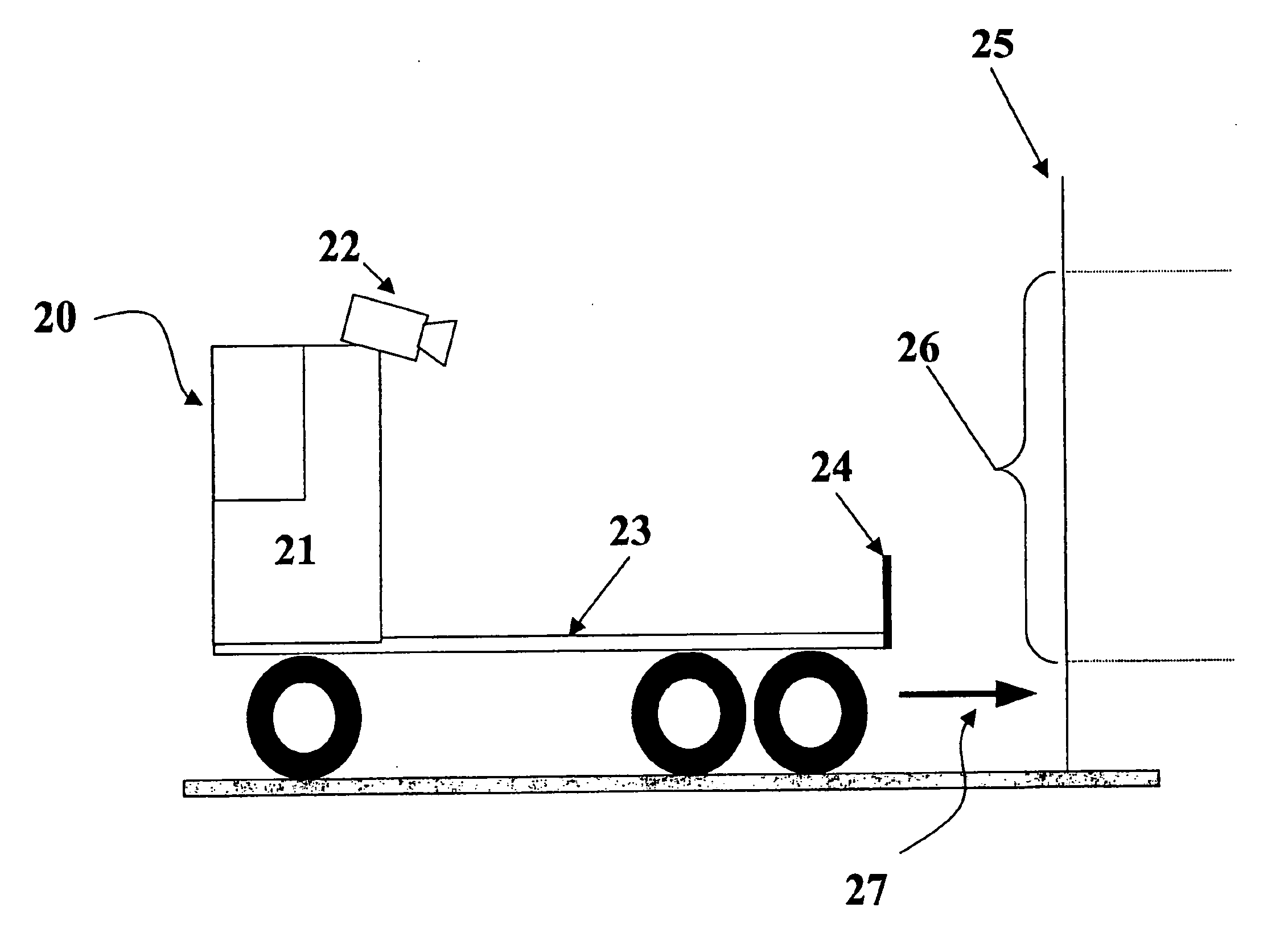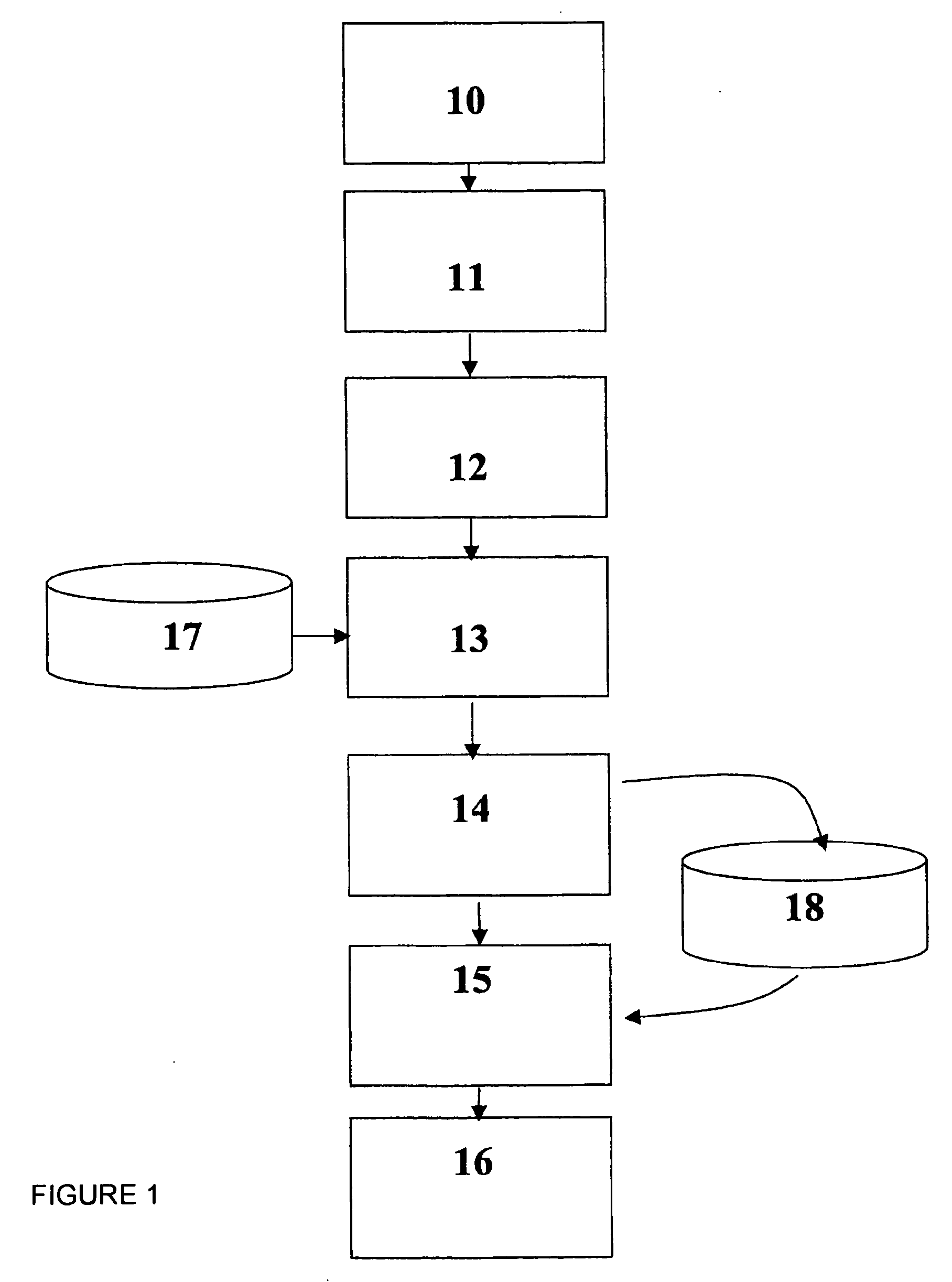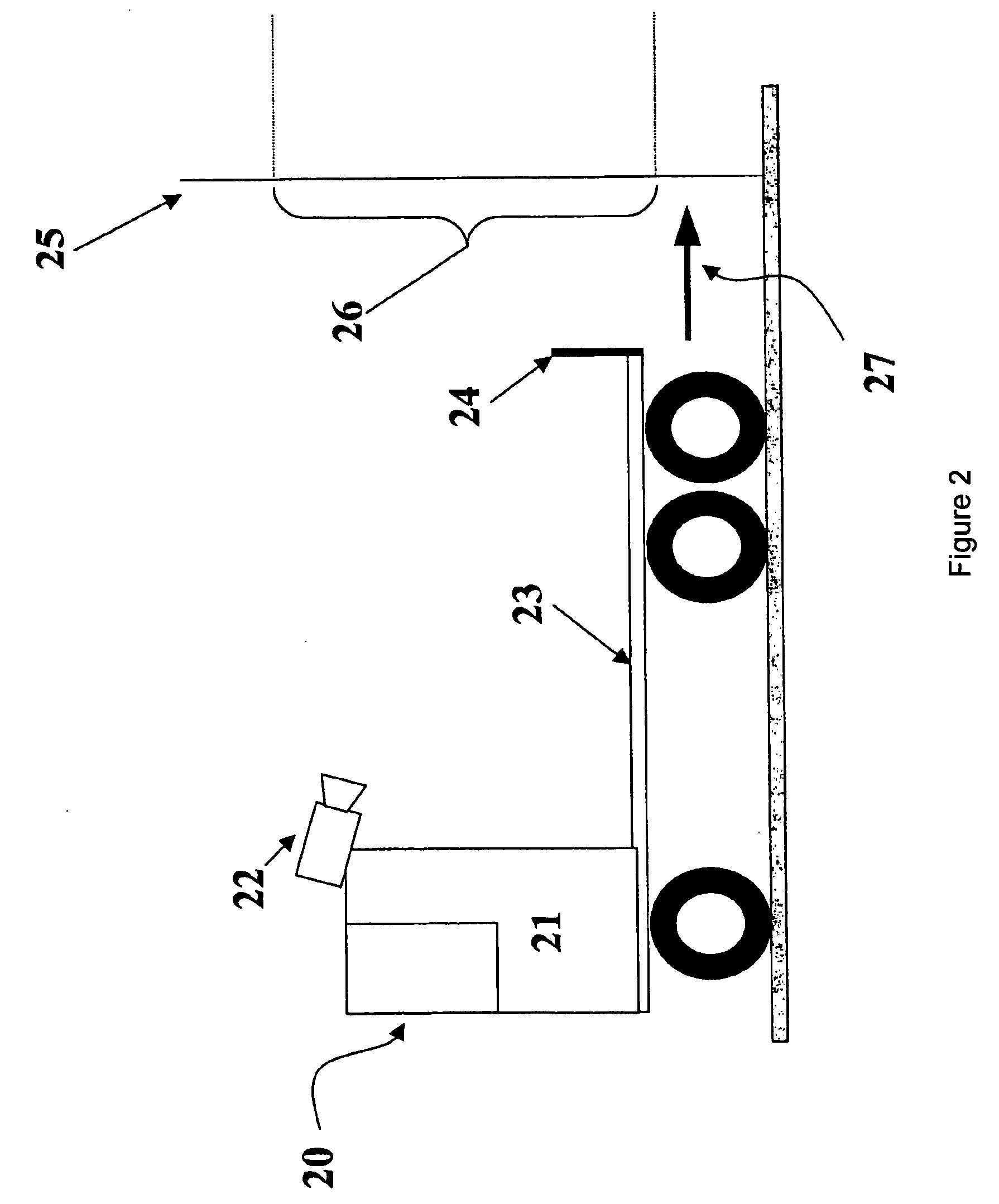Docking assistant
a technology for assistants and doctors, applied in the field of doctor assistants, can solve problems such as not always possibl
- Summary
- Abstract
- Description
- Claims
- Application Information
AI Technical Summary
Benefits of technology
Problems solved by technology
Method used
Image
Examples
Embodiment Construction
[0015] As becomes clear from FIG. 1, the method according to the present invention is essentially sequential, in a first step, an image sensor (10) recording image data from the field surrounding a motor vehicle. In this connection, it is generally a question of a camera sensor which records image data in the visible light spectrum. However, it is equally [0016] conceivable that the image sensor (20) functions within an essentially invisible wavelength range, in particular in the infrared or in the ultraviolet wavelength range. Using such an image sensor makes it advantageously possible for the field surrounding the motor vehicle to be recorded to be actively illuminated by headlights which radiate light in this wavelength range, while objects or people in the area are exposed to a nonglare-type illumination. On the other hand, within the scope of the present invention, a millimeter wave radar or a lidar may be used as image sensor (10).
[0017] The image data generated by image sens...
PUM
 Login to View More
Login to View More Abstract
Description
Claims
Application Information
 Login to View More
Login to View More - R&D
- Intellectual Property
- Life Sciences
- Materials
- Tech Scout
- Unparalleled Data Quality
- Higher Quality Content
- 60% Fewer Hallucinations
Browse by: Latest US Patents, China's latest patents, Technical Efficacy Thesaurus, Application Domain, Technology Topic, Popular Technical Reports.
© 2025 PatSnap. All rights reserved.Legal|Privacy policy|Modern Slavery Act Transparency Statement|Sitemap|About US| Contact US: help@patsnap.com



